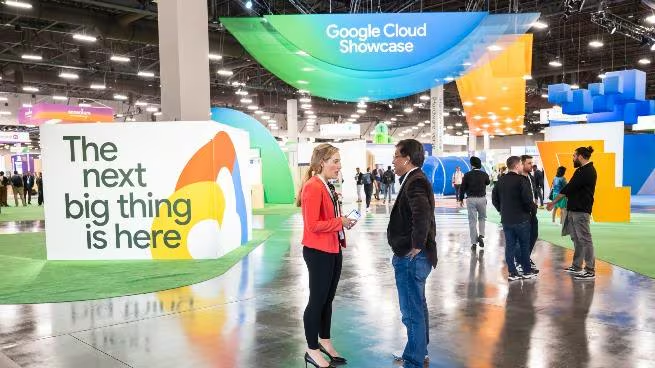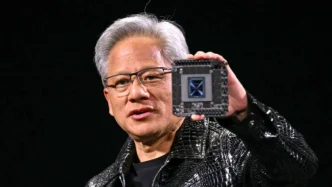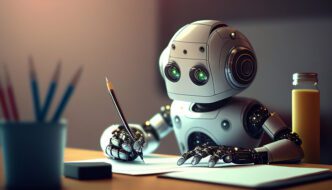Artificial Intelligence (AI) is transforming industries—from healthcare and finance to education and entertainment. But one of its most revolutionary roles is emerging in the world of scientific research. With its unmatched ability to analyze massive datasets, detect patterns, and make accurate predictions, AI is now accelerating scientific breakthroughs at an unprecedented pace. This raises a critical question: Can AI think creatively like human scientists do? To understand this, we need to explore how AI is contributing to science and whether it can genuinely generate original ideas.
How AI Is Shaping the Future of Scientific Research
AI is now central to cutting-edge work across multiple scientific fields—drug development, genomics, materials science, climate modeling, and astronomy, to name a few. Its strength lies in processing data on a scale no human could manage, revealing insights that speed up discovery.
At MIT, researchers used AI to identify a new antibiotic in just a few days—one that targets drug-resistant bacteria. DeepMind’s AlphaFold project solved the protein folding problem, a major breakthrough in biology, with wide-reaching impacts on medicine. In materials science, AI models like GNoME predicted millions of new crystal structures that could power future batteries and solar panels.
AI is also advancing our understanding of the cosmos. It has helped uncover new exoplanets and gravitational lenses, while in climate research, AI enhances prediction models for extreme weather and global warming patterns. Clearly, AI is not just a tool—it’s becoming a core collaborator in discovery.
Is AI Capable of Thinking Outside the Box?
Despite its impressive contributions, the real debate is whether AI can push boundaries the way humans do. Some of history’s greatest scientific leaps came not from data, but from daring ideas—think Einstein’s theory of relativity or Darwin’s theory of evolution. These breakthroughs stemmed from human curiosity, intuition, and the courage to challenge established norms.
AI, on the other hand, works through algorithms trained on existing data. It doesn’t possess imagination or consciousness. It identifies trends, not truths, and lacks the emotional drive or intuitive leaps that often lead to genuine innovation.
Yet, the picture isn’t entirely black and white. AI has already surprised scientists by generating unexpected ideas and uncovering new possibilities. In chemistry, machine learning models have created entirely novel compounds. In physics and engineering, AI has proposed design solutions and theories humans hadn’t considered.
The Case for AI as a Creative Partner
Many experts believe that AI is showing signs of creative thinking—at least in its own way. Take AlphaFold, which used a deep learning approach to solve a biological puzzle scientists had wrestled with for decades. Or Google’s Gemini 2.0, which has helped researchers generate new hypotheses that link ideas across disciplines.
A study from the University of Chicago found that AI could produce “alien” hypotheses—ideas so unconventional they wouldn’t occur to human researchers. These insights may not stem from imagination, but they reveal that AI can break out of traditional thinking patterns, suggesting possibilities no one had explored.
Where Critics Draw the Line
Skeptics argue that AI’s creativity has strict limits. Since it learns only from existing data, it can’t produce truly groundbreaking ideas—only extrapolate from what’s already known. Critics like Thomas Wolf point out that AI doesn’t ask bold, paradigm-shifting questions. It doesn’t challenge its own assumptions or make intuitive leaps.
Moreover, AI lacks serendipity—the kind of lucky mistake or emotional inspiration that drives human discovery. It operates on logic and code, not feelings or life experience. Studies published in ScienceDirect and commentary from Entrepreneur emphasize that while AI outputs may look creative, they lack depth, context, and emotional resonance.
Combining Human Ingenuity with AI Intelligence
In reality, AI is best seen as a powerful scientific partner rather than a standalone thinker. It augments human capabilities, allowing scientists to test ideas faster, explore complex problems, and bridge knowledge gaps more effectively.
According to research from Imperial College Business School, AI supports innovation by boosting research productivity and helping uncover new scientific principles. Kellogg School researchers also note that while AI can assist across domains, its full value emerges only through collaboration with human minds.
The future of science will likely be shaped by this hybrid model—pairing AI’s speed and scale with human intuition and imagination.
The Bottom Line
AI is changing the game in scientific discovery. It helps researchers identify patterns, propose hypotheses, and push the boundaries of what’s possible. But it still lacks the deep, intuitive spark that drives human creativity. For now, AI isn’t replacing scientists—it’s empowering them. As technology evolves, the most promising discoveries will come from the fusion of human insight and machine intelligence.
With responsible development and ethical integration, AI can expand the frontiers of science—without losing the irreplaceable value of human curiosity.













